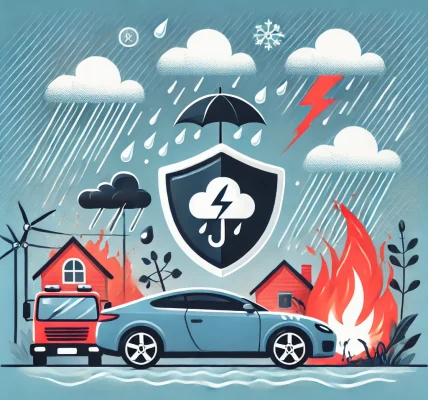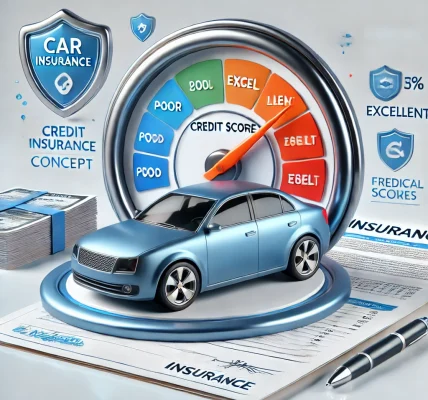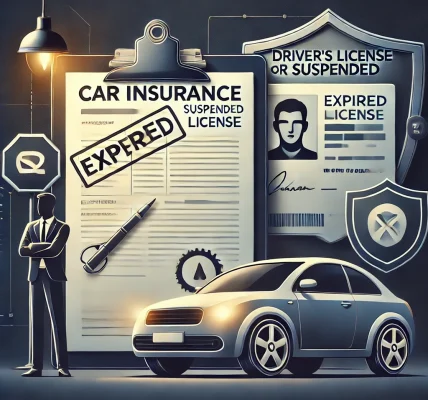Introduction
Car insurance is a necessary expense for vehicle owners, but that doesn’t mean you have to pay excessive premiums. Many drivers struggle to find the balance between affordability and adequate coverage. However, by implementing smart strategies, you can lower your car insurance costs without sacrificing the protection you need.
In this guide, we will explore proven ways to reduce your car insurance premiums while maintaining comprehensive coverage. These methods will help you save money while ensuring financial security in case of an accident or unforeseen event.
1. Compare Multiple Insurance Quotes
One of the simplest and most effective ways to lower your car insurance premium is by shopping around and comparing quotes from multiple insurance providers.
- Different insurers calculate risks differently, leading to variations in premium costs.
- Use online comparison tools or work with an independent insurance agent to find the best deal.
- Ensure that you compare policies with similar coverage limits and deductibles for an accurate evaluation.
Tip: Don’t just focus on the price—consider the insurer’s reputation, customer service, and claim process efficiency.
2. Choose the Right Coverage for Your Needs
Having the right amount of coverage is crucial, but you should also avoid over-insuring your vehicle.
- Liability Coverage: Ensure you meet the legal minimum requirements but consider additional protection if you have valuable assets.
- Collision and Comprehensive Coverage: If you have an older car, it may not be cost-effective to pay for comprehensive and collision coverage.
- Personal Injury Protection (PIP) and Medical Payments: Review whether your existing health insurance provides sufficient coverage before opting for additional medical insurance.
Tip: If your car’s value is low, you might consider dropping certain coverages to save money.
3. Increase Your Deductible
A deductible is the amount you pay out of pocket before your insurance covers a claim. Raising your deductible can significantly reduce your premium.
- Increasing your deductible from $500 to $1,000 could lower your premium by up to 20%.
- However, ensure you have enough savings to cover the higher deductible in case of a claim.
Tip: Only choose a higher deductible if you’re confident in your ability to cover the cost in an emergency.
4. Maintain a Clean Driving Record
Insurance companies reward safe drivers with lower premiums. A history of accidents and traffic violations can significantly increase your insurance costs.
- Avoid speeding, reckless driving, and other traffic violations.
- Some insurers offer discounts if you complete a defensive driving course.
- If you have past violations, check with your insurer to see if they offer a discount for maintaining a clean record over time.
Tip: Sign up for a telematics program that tracks your driving habits—good driving behavior can lead to significant discounts.
5. Take Advantage of Discounts
Many insurance companies offer discounts that can help reduce your premium. Common discounts include:
- Good driver discount: For those with a clean driving history.
- Bundling discount: Combining auto insurance with home, renters, or life insurance can lower rates.
- Low mileage discount: If you drive fewer miles annually, you may qualify for a lower rate.
- Safety features discount: Cars with anti-theft devices, airbags, and other safety features can qualify for discounts.
- Loyalty discount: Long-term customers may receive special savings from their insurer.
- Student discounts: Young drivers with good grades may be eligible for discounts.
Tip: Ask your insurer about all available discounts and see which ones apply to you.
6. Maintain a Good Credit Score
In many regions, insurance companies use credit scores as a factor in determining premiums. A higher credit score can lead to lower rates.
- Pay your bills on time and reduce outstanding debts.
- Regularly check your credit report for errors and dispute any inaccuracies.
- Keep credit card balances low relative to your credit limit.
Tip: If your credit score improves, request a rate reassessment from your insurer.
7. Drive a Car with Lower Insurance Costs
The type of car you drive affects your insurance premium. Factors that influence costs include:
- Vehicle safety ratings: Cars with better safety features and crash-test ratings may have lower premiums.
- Repair costs: Expensive or foreign-made cars often cost more to insure due to higher repair costs.
- Theft risk: Vehicles frequently targeted by thieves may have higher premiums.
Tip: Before purchasing a car, research insurance rates for different models.
8. Use Telematics and Usage-Based Insurance
Many insurance companies offer telematics programs that track your driving habits through a mobile app or a device installed in your car. Safe driving behavior can earn you discounts.
- Pay-per-mile insurance programs are beneficial for drivers who don’t use their car frequently.
- Programs track speed, braking, acceleration, and time of day you drive.
Tip: If you’re a safe driver, enrolling in a usage-based program can lead to significant savings.
9. Avoid Small Claims
Filing small claims frequently can cause your premium to increase. If the repair cost is manageable, consider paying out of pocket instead of filing a claim.
- Frequent claims make you appear as a high-risk driver.
- Some insurers offer a claim-free discount for policyholders who go a certain period without filing claims.
Tip: Weigh the long-term premium increase against the short-term repair cost before filing a claim.
10. Review and Update Your Policy Regularly
Your insurance needs may change over time, so it’s essential to review your policy annually.
- If your car’s value has depreciated, you may be able to reduce coverage.
- If your mileage has decreased due to remote work, inform your insurer for potential discounts.
- Check if new discounts or policy options have become available.
Tip: Set a reminder to review your policy before renewal to ensure you have the best rate.
Conclusion
Lowering your car insurance premium doesn’t mean sacrificing essential coverage. By taking proactive steps like comparing quotes, maintaining a good driving record, increasing deductibles, and leveraging discounts, you can find a policy that offers both affordability and adequate protection.
The key is to stay informed, assess your coverage needs regularly, and communicate with your insurer about potential savings. By implementing these strategies, you can enjoy lower insurance costs without compromising on the security and peace of mind that car insurance provides.



